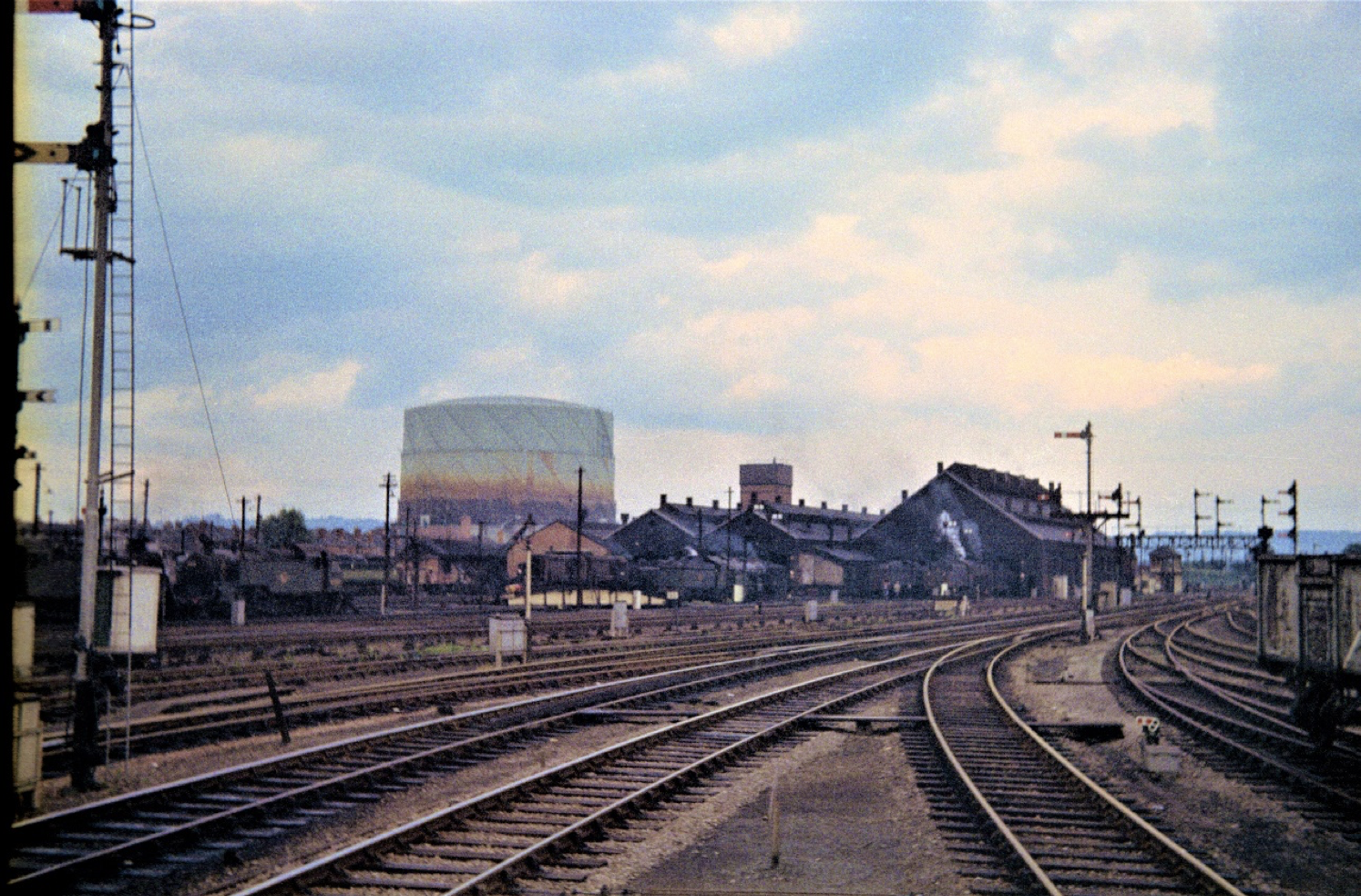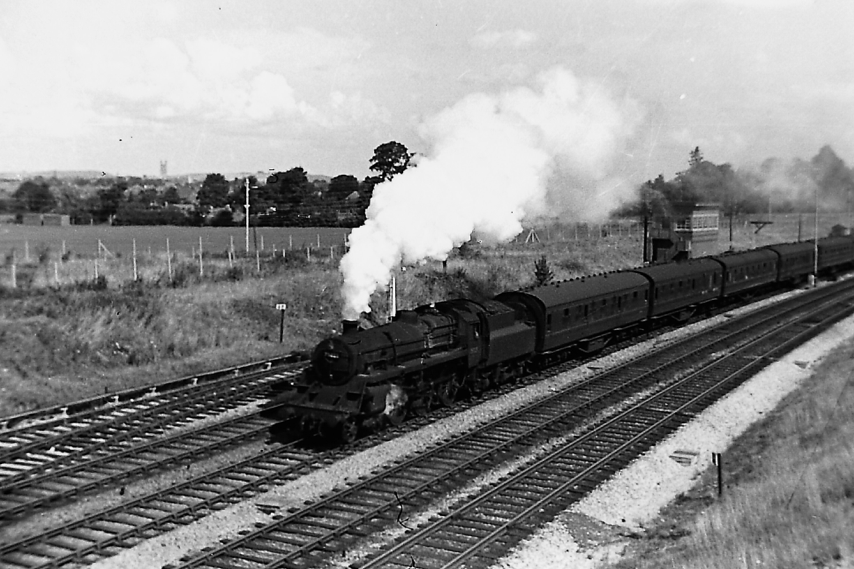1958: Regional Boundary Changes
The Eastern invasion
The event that would have a major impact on the Gloucester steam scene in its final years was the wholesale reorganisation of regional boundaries that occurred in April 1958. Prior to the changes, their boundaries were still based on the operating areas of the equivalent ‘Big Four’ pre-nationalisation companies, so that in the Birmingham, West Yorkshire and Devon and Cornwall areas for example, the BR regions became intertwined. The table below lists the changes that affected locomotive operations in the Gloucester area:
|
Old shed code |
Name |
New shed code |
|
19A |
Sheffield Grimesthorpe |
41B |
|
19B |
Sheffield Millhouses |
41C |
|
19C |
Canklow |
41D |
|
20A |
Leeds Holbeck* |
55A |
|
21C |
Bromsgrove |
85F |
|
22A |
Bristol Barrow Road |
82E |
|
22B |
Gloucester Barnwood |
85E |
|
38E |
Woodford Halse |
2F |
|
68A |
Carlisle Kingmoor |
12A |
|
71G |
Bath (S&D) |
82F |
|
71H |
Templecombe |
82G |
[*n.b. Leeds area sheds had been transferred to the NER on its creation from the Eastern Region in 1957]
In February 1958 Midland sheds on the Bristol – Birmingham route were transferred from the LMR to WR, Barnwood being recoded from 22B to 85E, and Bristol Barrow Road from 22A to 82E. As a result, creeping ‘Westernisation’ soon took place at Gloucester, Bristol, and Bath. The northern half of the Somerset & Dorset was transferred to WR control from the SR and in return Weymouth was transferred to SR, although ‘Black 5s’ continued to work over the Somerset & Dorset for a time. SR sheds in Devon and Cornwall were also transferred to WR, Plymouth Friary formerly 72D becoming 83H. In addition, Great Central sheds including Woodford Halse, Leicester and Gorton were transferred from ER to LMR, whilst further afield, Carlisle Kingmoor was transferred from the ScR (68A) to the LMR (12A).
In contrast Midland sheds in the Sheffield districts were transferred to the ER, leading to an influx of ex-LNER locos to the Bristol line, as Darnall (41A) locomotives were substituted for Millhouses ones on occasion. Indeed, ‘B1’ 4-6-0 No. 61152 was reallocated to Millhouses (41C), presumably to get Midland men accustomed to B1s. Following the reorganisation No. 61151 (41A) was recorded at Bristol on 11 June 1958, whilst ‘K3’ No. 61925 was in Gloucester in August. However, even before these changes, the odd ex-LNER visitor had been recorded. No. 61113 had been observed in Gloucester in June and July 1956 on excursions. But probably the most extraordinary event prior to 1958 had been the appearance in Gloucester on 28 October 1957 of ‘O4’ No. 63686 that had worked a Sealand (WM&CQ) to Ashchurch special MOD freight. A fuller list of Eastern visitors observed in the Gloucester area over this period is provided in Loco Records – Eastern Visitors.
Another consequence of the regional boundary changes was a major reallocation of locomotives. Standard ‘4’ 4-6-0s took over the local passenger duties of Midland 4-4-0s from the autumn of 1958, with Nos. 75004/21/2 allocated to 82E and Nos. 75009/23 at 85E. Standard 2-6-2Ts in the 82000 series also became common in the Bristol area exiled from the Chester area as a result of the ex-WR line from Birmingham to Chester coming under the control of the LMR. GW 2-6-0s started to appear at Barrow Road, whilst Collett 0-6-0s and ‘5700’ class 0-6-0PTs were also being tried out on the Somerset & Dorset, although in due course Standard types prevailed, especially 4-6-0s and ‘9Fs’. However, unrebuilt ‘WCs’ from Bournemouth (71B) still worked the ‘Pines Express’: indeed, for a time in the early fifties Bath had had its own allocation (Nos. 34040-3).
Barnwood depot’s Standard ‘4’ 4-6-0 No. 75023 heads south past Tuffley Junction signal box with the Sunday 6.55am Derby to Bristol semi-fast due off Gloucester Eastgate at 11.20am. The locomotive seems to be priming, and it is possible it came onto the train at Gloucester as a substitute for a failed locomotive. The date is 31 July 1960.
Summer Saturday traffic
One fascination of the Midland main line was an anticipation of the visit of ‘foreign’ engines, particularly on summer Saturdays when many extra holiday trains ran. In general, LM locos from the Western and Central Divisions were rare in Gloucester, but on summer Saturdays they could turn up unexpectedly on almost any duty. They were readily recognisable by a plate below the front buffer beam which protected the electro-magnetic AWS apparatus from damage. We would shout ‘plate’ when we saw one so equipped, because we knew there was a good chance it could be a ‘cop’! The equipment on some LM locos also included a cylinder on the running-plate in front of the cab housing a generator. Whilst the standard BR AWS system was being adopted elsewhere on the LM Region, AWS was not useful locally, as the GW-type ramp ATC system was still employed on ex-GW routes in the Gloucester area, whilst the Midland lines were devoid of any such warning system.
Sightings of unrebuilt Patriots included No. 45515 Caernarvon and No. 45519 Lady Godiva before its reallocation to 82E. Rare ‘Jubilees’ turned up occasionally. For example, if Leeds Holbeck were short of a suitable engine for the down ‘Devonian’, 55A could substitute a 12A or 67A ‘Jubilee’ which would have worked to Leeds over the Settle & Carlisle line. On 4 July No. 45730 Ocean reached Bristol. I also remember seeing, amongst others, Nos. 45691 Orion and 45720 Indomitable. Pigeon specials were also a feature of traffic in the early part of the summer, many coming down from the north-west: ‘Patriots’ from Carlisle Upperby (12B) were recorded, including 7P No. 45514 Holyhead.
The summer of 1958 was also noticeable as the year in which Hughes ‘Crabs’ were used regularly on summer Saturday holiday trains. ‘9Fs’ also appeared on passenger trains – for example, one was recorded working the Newcastle – Cardiff service.

